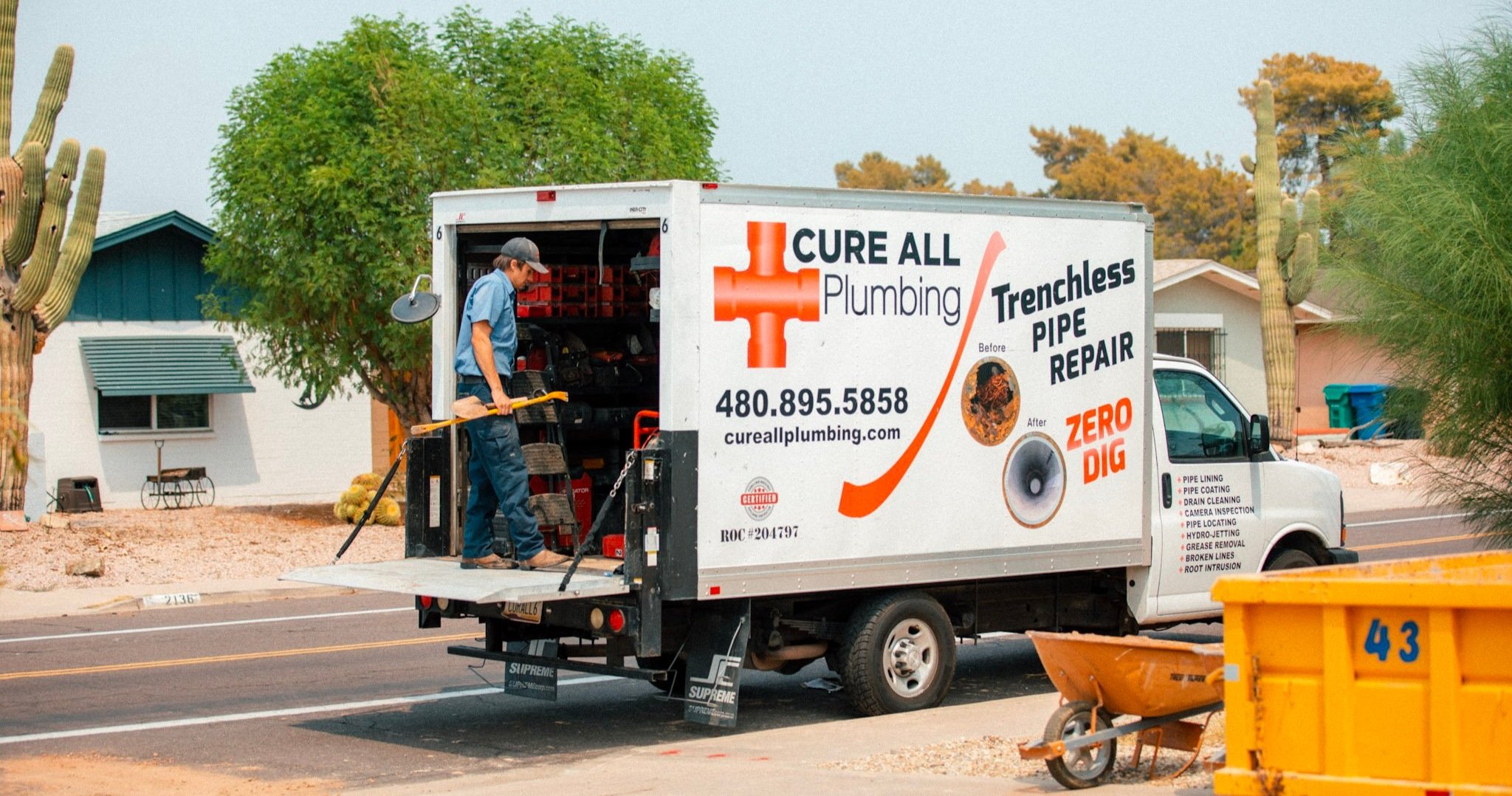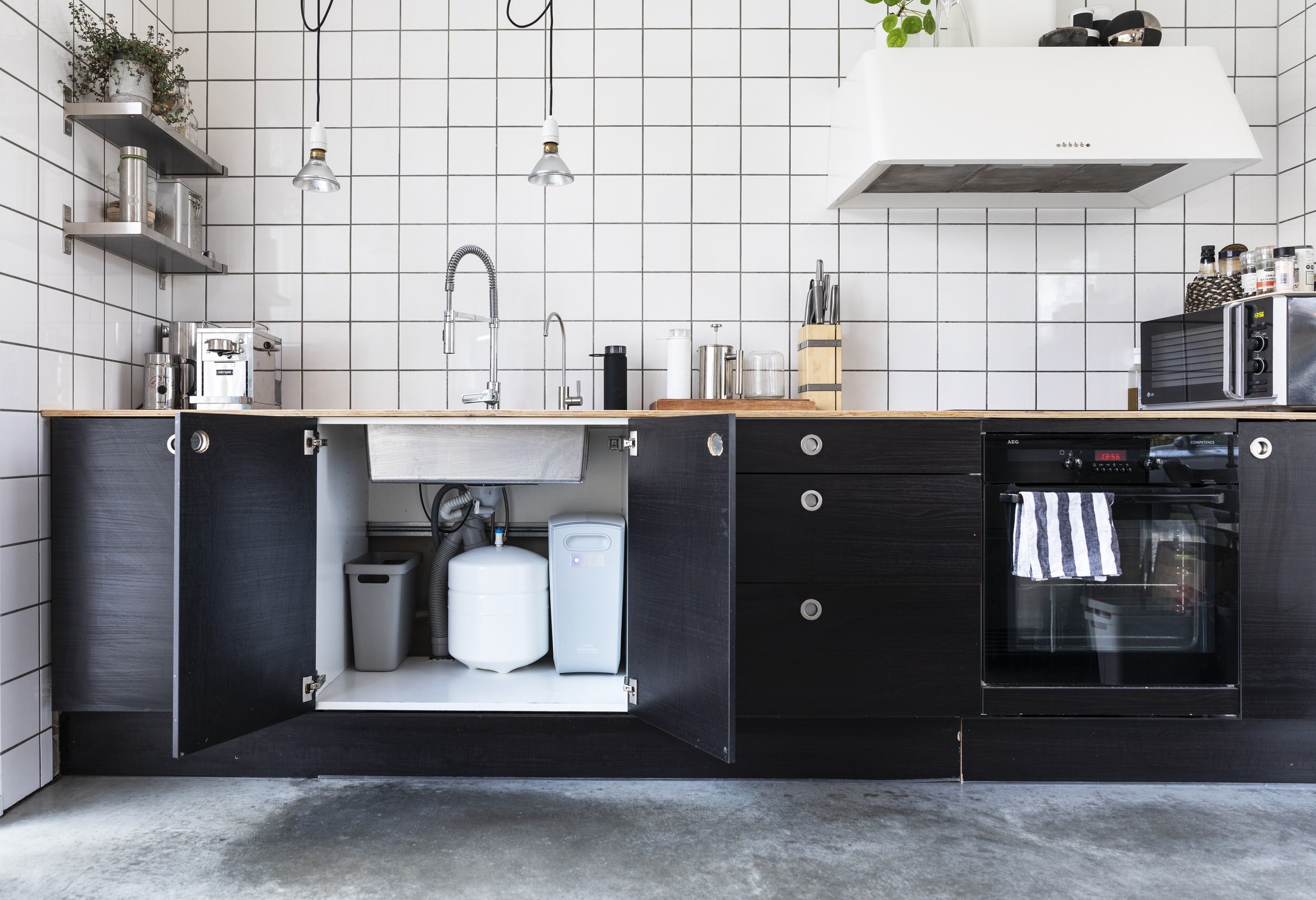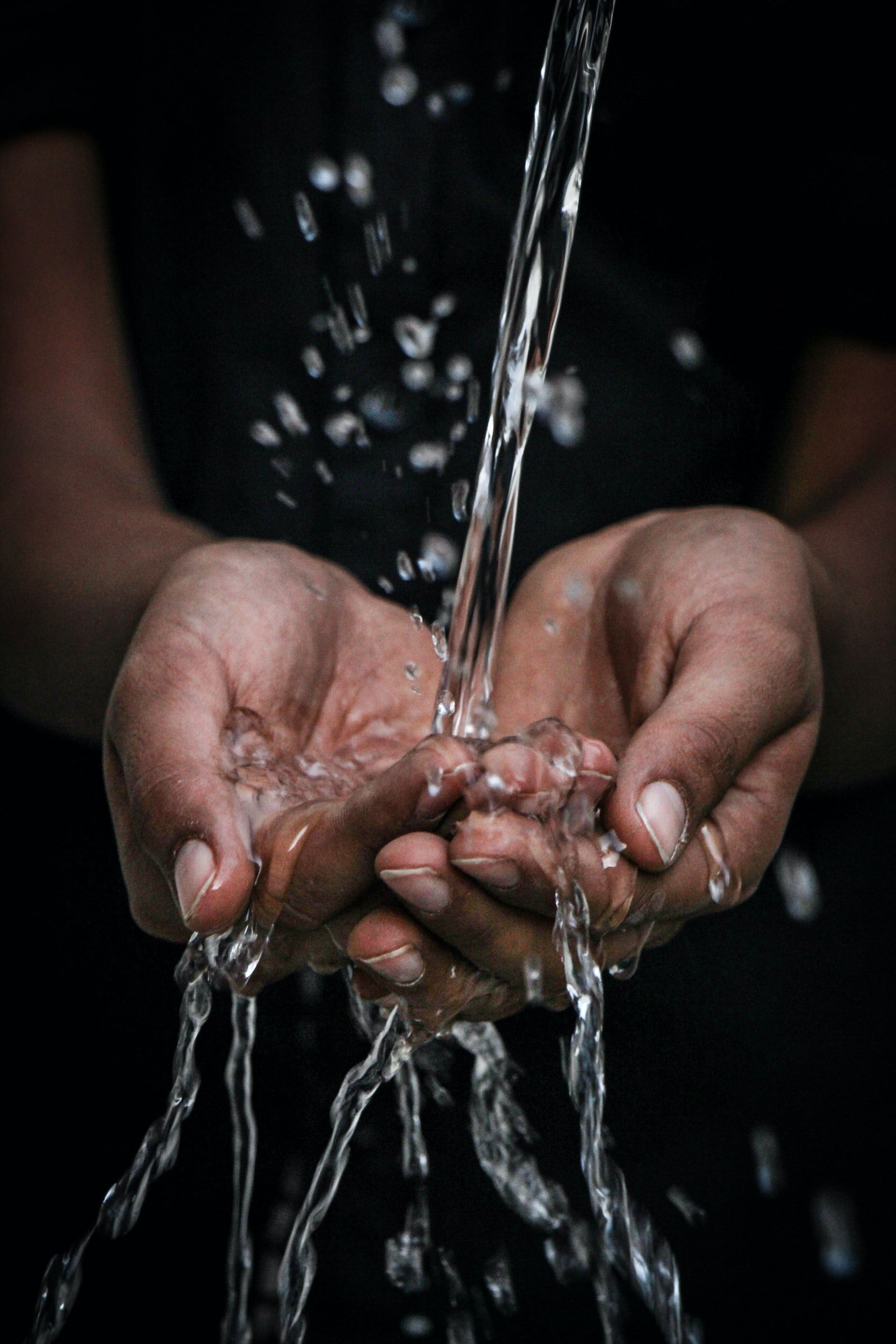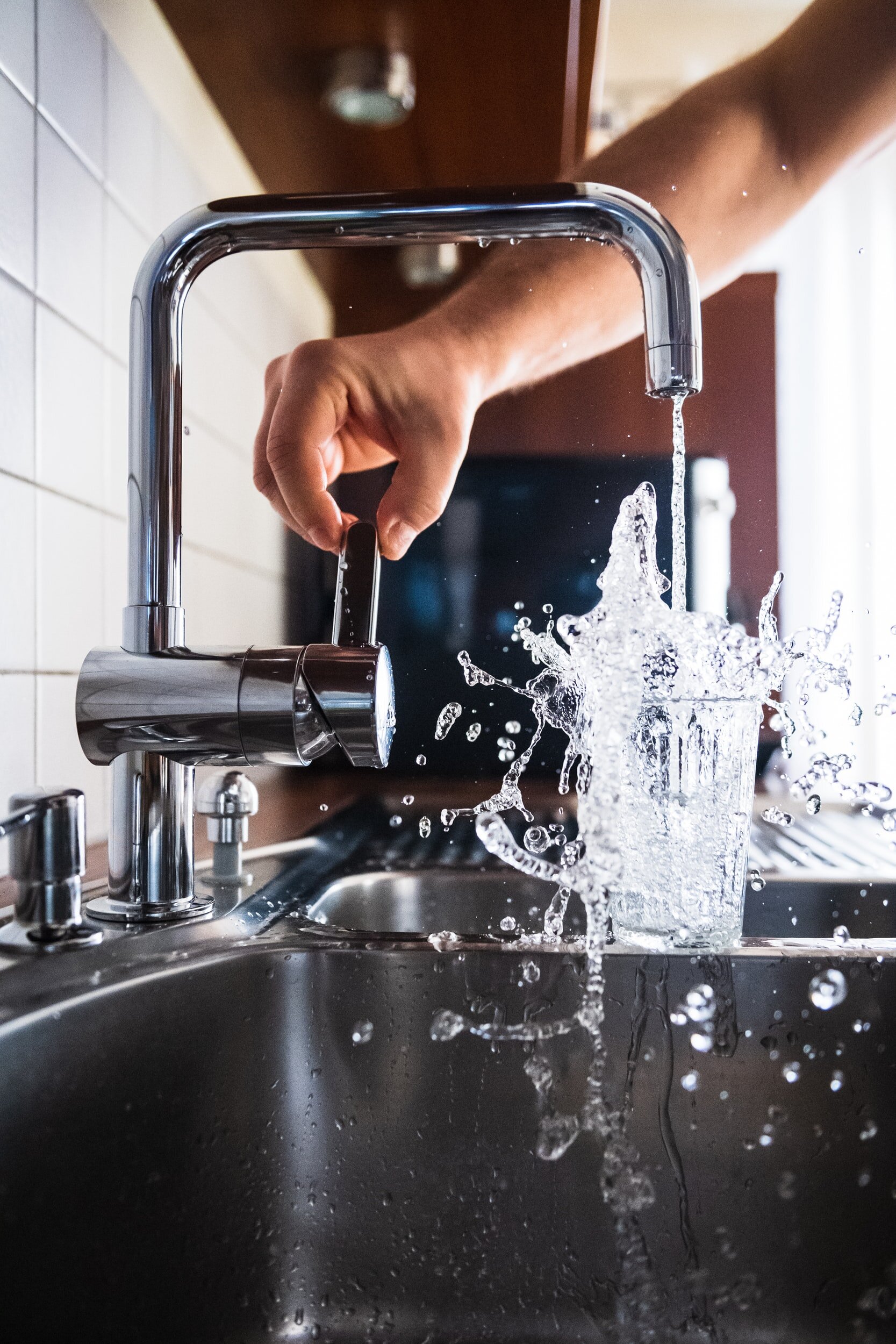free quote
From unit selection to installation, let us help you quote out your reverse osmosis system.
What is Reverse Osmosis?
Running water through a reverse osmosis system not only filters the water, but also purifies it. With a three stages of different filters, your water will be free of sediment, minerals, viruses, and bacteria. Most reverse osmosis systems will add in healthy drinking minerals back into your water to create a purified and perfect drinking water.
How Does Reverse Osmosis Work?
A reverse osmosis tank can either sit under your sink, providing water to that specific tap, or at your waterline, providing fresh water to your entire home. Reverse osmosis units have three filtration processes
Step 1: Sediment filtration
The first step in reverse osmosis filtration is sending water through the sediment filtration tank. This filter removes clay, sand, and larger particles like rust and calcium carbonate. After the water passes through the sediment filtration tank, it then heads through the carbon filtration tank.
Step 2: Carbon Filtration
Carbon filters can remove sediment as small as 1 micron in size. It also helps remove materials that the reverse osmosis membrane cannot remove, such as non-polar molecules, some pesticides, herbicides, chlorine, radon, and other organic chemicals like chlorine. Chlorines and oxidizers potentially could burn the osmosis membrane, so it’s important to run water through a carbon filter first. Some smaller particles will still slip through the carbon filter and pass through to the reverse osmosis membrane.
Step 3: Water Passes Through the Reverse Osmosis Membrane
After the water has passed through the sediment and carbon filtration tanks, it’s time for the water to go through reverse osmosis. The water is pressurized against the osmosis membrane and is then pushed through. These membranes can filter out sediment and contaminants as small as 0.001 microns in size. As it removes molecules heavier than water molecules, it strips the water from sodium, hard metals, and contaminants as it moves through the semipermeable membrane.
Post Filtration Treatment
Not all reverse osmosis systems will remineralize the water after stripping it from all minerals. Adding back in healthy minerals can make your drinking water perfect.
Reverse Osmosis VS. Water Filtration Systems
Reverse Osmosis
Reverse Osmosis Pros
Removes arsenic, nitrates, and other harsh chemicals
Purifies water and often adds in healthy drinking minerals
3 filter system to remove almost all sediment and contaminates
Reverse Osmosis Cons
Must be diligent to replace filters on time
Needs professional installation (hole drilled into your home’s main line)
Water pressure may decrease throughout home
If you select an under-the-sink system, it will take up a lot of storage room under your counter.
Water Filtration
Water Filtration Pros
Traditional filters are cheaper than reverse osmosis systems
Can be simpler than reverse osmosis systems; filters can sit under sinks, on the faucets, in pitchers, and for entire home systems.
Water Filtration Cons
Most systems will not remove as many harmful chemicals, pesticides, or metals as reverse osmosis
You’ll need to regularly change out filters
Which Method Will Work Best?
Depending on what you need to remove from your water, you can find the perfect reverse osmosis system or water filtration system for your home. If you have harmful chemicals in your water’s supply, reverse osmosis may be the way to go. If you’re just needing to filter out sediment and particles, it’s possible a water filtration system will cover your bases.
While it takes up a good amount of space underneath your sink, reverse osmosis systems set up for one tap is far less expensive than a whole house system.
Different Kinds of Reverse Osmosis Units
Whole House Reverse Osmosis Systems
If you’d like to have purified water on-tap throughout your entire home, a reverse osmosis system placed near your water main’s entrance can provide purified water for the entire home.
Under-the-sink Reverse Osmosis Systems
While it takes up a good amount of space underneath your sink, reverse osmosis systems set up for one tap is far less expensive than a whole house system. It still provides perfectly filtered water, but it’ll only be on-tap for one sink.
Green RO Systems
Many reverse osmosis systems waste a lot of water. The contaminated water is drained into your sewage system and the smaller portion of water moved through the reverse osmosis system is purified. With these Green RO Systems, the amount of water wasted is far less; saving you money when that water bill rolls around.
Reverse Osmosis Maintenance
Reverse osmosis systems require a good amount of maintenance. From staying on top of post treatment additives to replacing filters, you’ll also need to clean your system routinely. Sediment can build up in the sediment filter, making it difficult for water to make it through the system. You’ll also need to clean the water input and waste water output from hard water build up. Routine maintenance will keep your RO system healthy and ready for years to come.
Frequently Asked Questions
+ Will reverse osmosis also remove bacteria and viruses from my water?
Reverse osmosis will remove next to everything that shouldn't be in your water. Some very small molecules and nonpolarized miracles will slip through the reverse osmosis membrane and remain in your water, but for the most part, it will remove anything harmful from your water supply. To get a better idea on how reverse osmosis can work for you, get a chemical test of your water to ensure that it is the right purification system.
+ Is reverse osmosis water healthy to drink?
Since reverse osmosis filtering removes all of the metals, electrolytes, and healthy drinking minerals from the water in addition to the harmful chemicals and pesticides, the water isn't the best to drink. To combat this, many reverse osmosis filtration systems add in healthy minerals to the water after it's been filtered.
+ How much does a reverse osmosis system cost?
Different systems vary in cost, as will installation, upkeep, and filters. At Cure All Plumbing, we can help you assess your home situation, find the perfect system for you, install it, and help you maintain it, all with upfront pricing. Contact us today for a quote!
+ Do reverse osmosis systems waste a lot of water?
While the reverse osmosis system does consume more water while in use, it does not consume it enough to effect your water bill. Once the reverse osmosis sytem storage tank is full, the system will shut down and not waste any additional water.
Contact Cure All Plumbing
Ready to upgrade your home’s water filtration system? Reverse osmosis can be the ultimate system for removing both sediment and bacteria from your water. Keeping your body and your plumbing system happy.
















